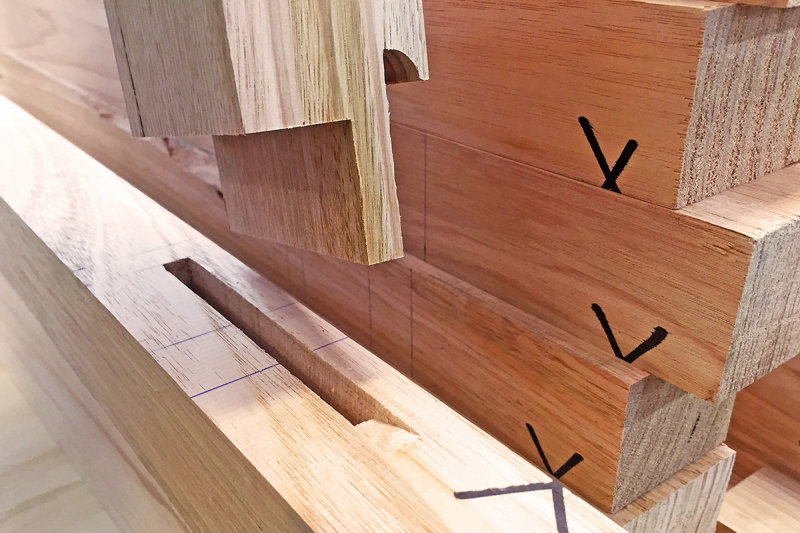Mortise-and-tenon joints have been found at archaeological sites dating back as far as 7,000 years, so you can see why we rate them so highly for strength and longevity!
There are many different types of mortise and tenon, but all have a basic construction in common: a hole or cavity, known as a mortise, is cut into a piece of timber to a size that's perfectly matched to the notch or tongue at the end of a second piece of timber. When the tenon is fully inserted into the mortise, the shoulders of the tenon are seated flat against the first piece of timber and the two pieces are glued together. In the McKay Joinery workshop, we use 2-pac waterproof PVA on window sashes and doors, and Rocor adhesive sealant on frames, for maximum strength and to ensure that no water can enter the joint.

A mortise and tenon for a window sash in production in the McKay Joinery workshop.
We use different variations of the mortise-and-tenon joint depending on the requirements of specific designs and the thickness of the timber being used. Doors and windows made using this technique will stand the test of time and, particularly important for windows, are impervious to water penetration.

A tenon at the end of a piece of timber that's being fed through our wide-belt sander.
Mortise-and-tenon joints are used by stonemasons and blacksmiths too. They even played a role in the construction of Stonehenge, with tenons on the top of each pair of vertical stones locking into mortises on the underside of their horizontal lintel. With a history going back that far, looking for a stronger joint would be the woodworking equivalent of trying to reinvent the wheel!